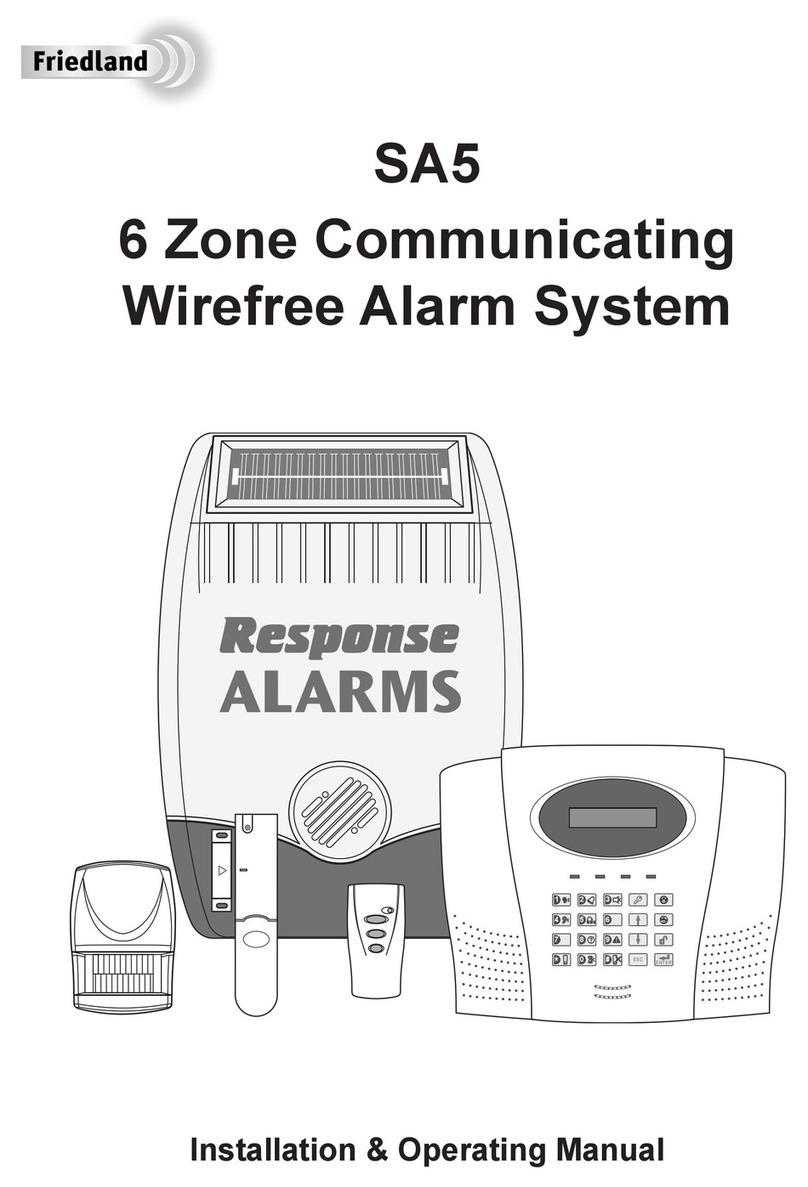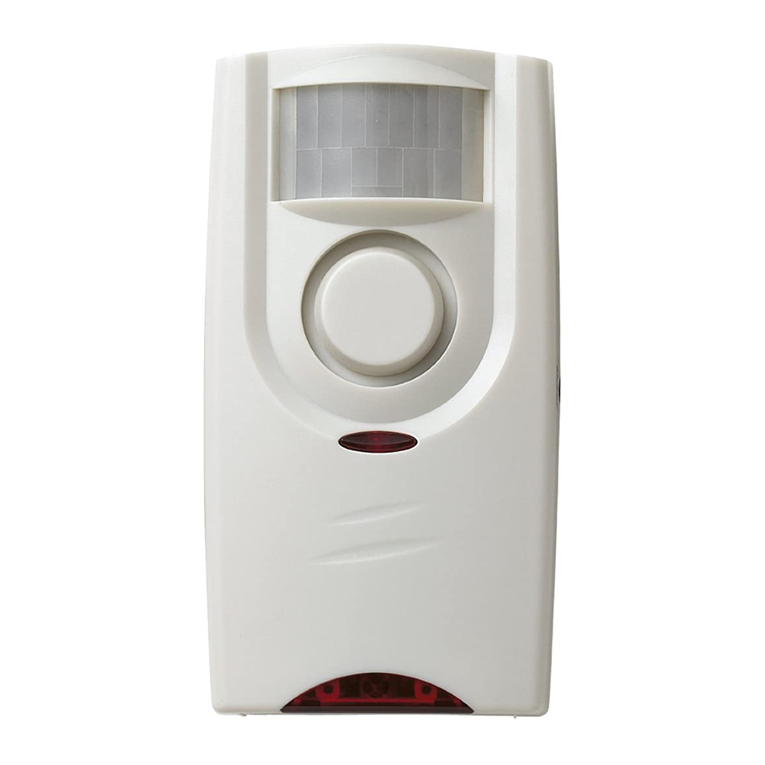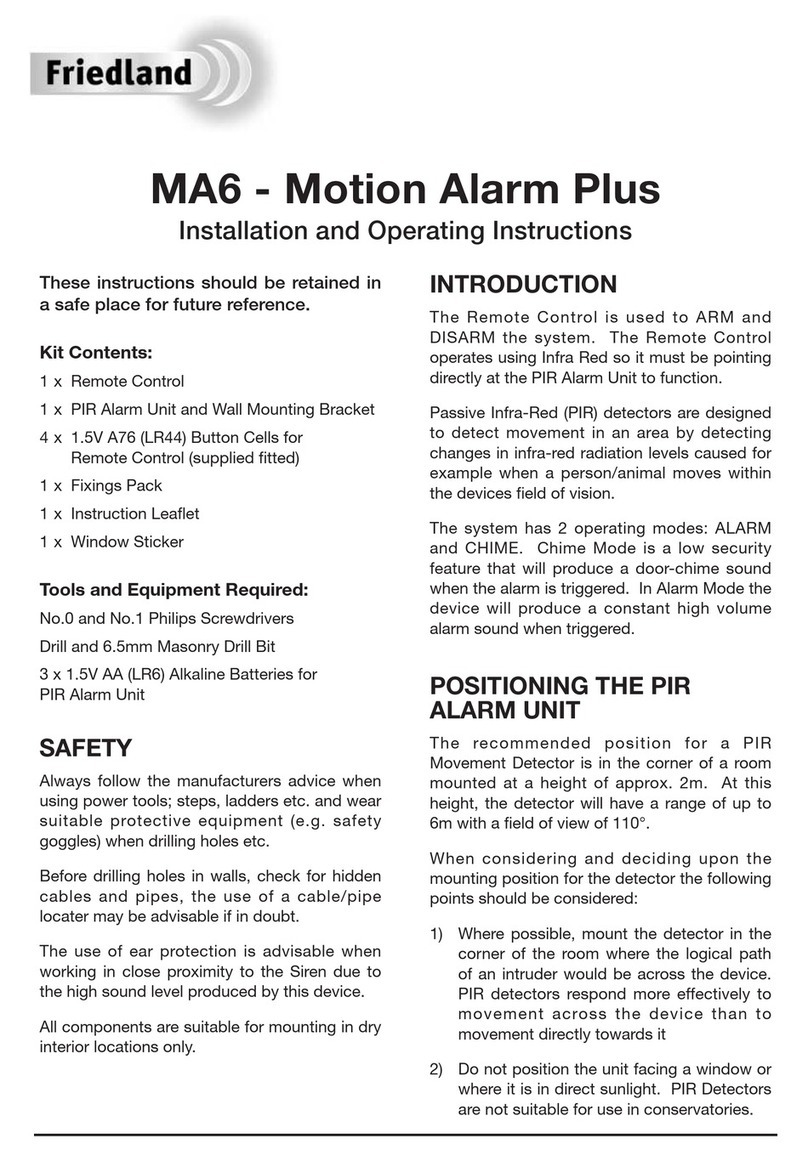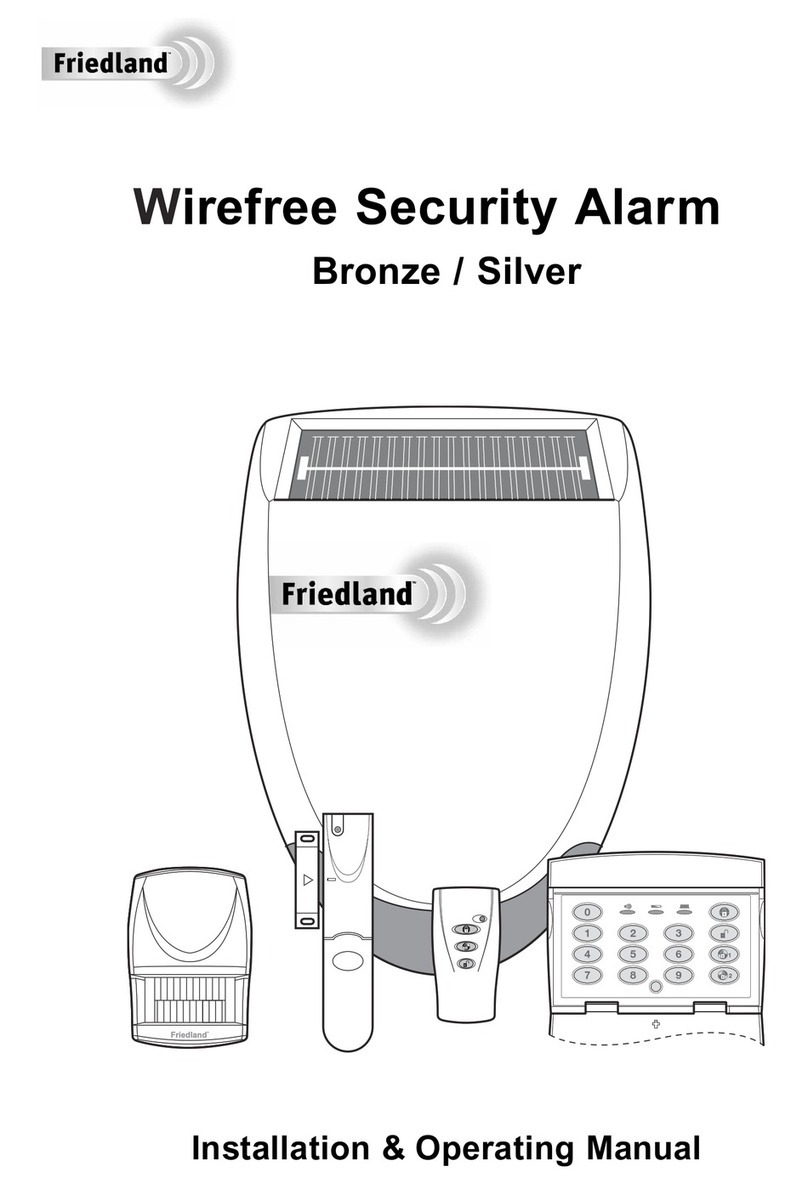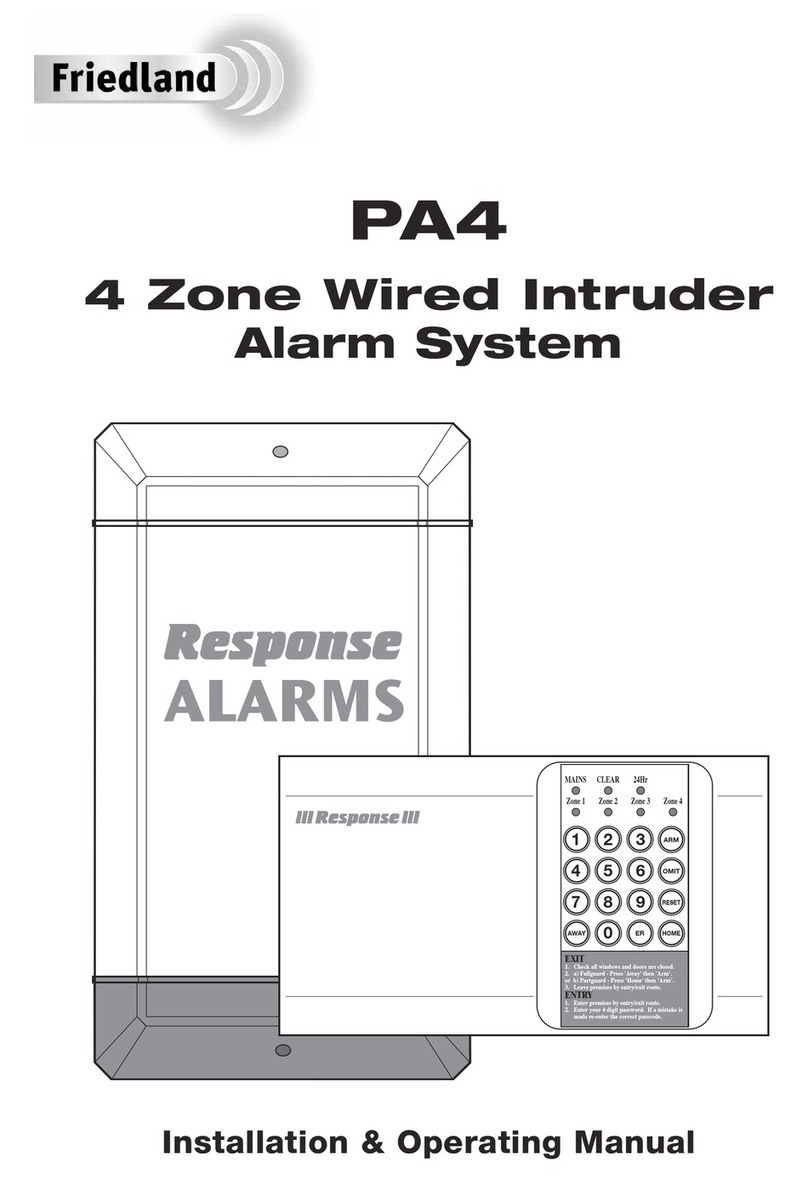SYSTEM ARMING
The system has a full ‘Arm’ and a ‘Part-Arm’ mode.
Full ARM will arm all zones while the ‘Part-Arm’
mode will only arm the zones that are enabled for
‘Part-Arm’.
For example:
The system could be configured such that during night
time, ‘Part-Arm’ would arm only zones protecting the
lower floor and outbuildings, leaving the upper floor
free for movement without triggering the alarm.
However, when the property is left un-occupied,
the full ‘Arm’ mode will arm all zones to protect the
entire property, (i.e. upper and lower floors and
outbuildings).
ZONES
The system incorporates 6 wirefree Alarm Zones for
the connection of the system detectors that are
used to independently monitor different areas of the
property. In addition to standard intruder protection,
each zone may also be configured to operate in one of
three other modes:
- ‘Personal Attack’ mode provides 24 hour monitoring
of any Personal Attack (PA) switches incorporated
into the system.
- ‘24-hour Intruder’ mode provides 24 hour intruder
protection for areas where continuous monitoring is
required, (e.g. gun cupboards).
- ‘Fire’ mode provides 24 hour monitoring of any
Fire/Smoke detectors incorporated into the system.
ENTRY/EXIT DELAY
Each zone can be programmed to be Armed in either
Instant or Delay mode.
Usually the zone covering the main entrance door and
the route to and from the Control Panel would be
configured in Delay mode. This allows time for the user
to exit the property after setting the system at the
Control Panel or to Disarm the system before an alarm
condition is triggered when re-entering the property.
The remaining zones would be configured as Instant
allowing them to initiate an alarm immediately a
detector on the zone is triggered.
Delay Armed zones will not become fully armed until
after the Entry/Exit delay period has expired. When a
detector on a Delay Armed zone is triggered, an alarm
condition will not be triggered until after the Entry/Exit
period has elapsed. If the system is not disarmed
during the delay period, an alarm condition will occur
when the delay period expires.
Instant Armed zones are immediately able to initiate
an alarm as soon as the system begins to arm.
ZONE LOCKOUT
If a detector on an active zone is triggered while the
system is armed, an alarm condition will occur. After
the programmed alarm duration has expired the alarm
will stop and the system will automatically reset.
Subsequent detectors triggered will again initiate an
alarm condition. If a single zone initiates an alarm
condition three times then that zone will be ‘Locked
Out’ and any further alarm signals from that zone will
be ignored until the system is disarmed.
Note: The ‘Zone Lockout’ feature can be disabled if
required.
VOICE DIALLER
This system incorporates a telephone voice dialer which
is used to call for help and/or notify the user that the
system has been triggered and an alarm has occurred.
If the Voice Dialer is enabled and an alarm condition
occurs, the system will call for help using your
recorded alarm message and up to four telephone
numbers. When the telephone voice dialer is
activated it will call the first enabled number in the
dialing sequence and replay the recorded alarm
messages for the configured ‘Play Time’. The
recipient must acknowledge the message by
pressing the button on their telephone keypad.
If the call is unanswered or an acknowledgment
signal is not received then the next active number in
the dialing sequence will be called. The dialer will
continue calling each number in turn until either all
numbers in the sequence have been dialed the set
number of times or the dialing sequence is cancelled
by an acknowledged signal from the recipient.
INTRODUCTION AND OVERVIEW
3
